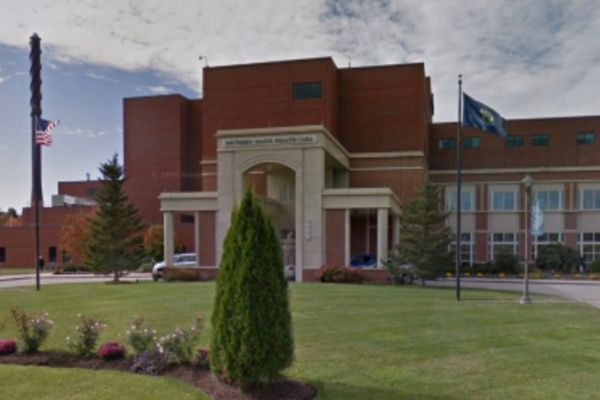
After nearly a decade of declining bird numbers, the internationally protected Macquarie marshes experienced one of its best migratory bird breeding seasons this year, raising hopes that the Murray Darling Basin plan is beginning to produce environmental dividends.
At the same time, food and fibre farming in the vast basin has grown to $22bn a year, despite the drought of 2018 to 2019 and the buybacks of water entitlements from agriculture.
Tuesday marks the 10th anniversary of the $13bn Murray Darling Basin plan, and there will be intensive debate about whether the plan is on track.
The fish kills of 2019, when giant Murray cod took their last breaths in shallow muddy pools while the river at Menindee was carpeted with dead perch, brought the stark reality of the state of the river system into the public consciousness.
The recent floods have had the opposite effect and served to make river health seem less urgent.
But restoring the 1,500km river system remains one of Australia’s biggest challenges.

Have we made progress?
Prof Richard Kingsford from the University of New South Wales, who visits the Macquarie marshes every year, says there have been gains.
2,100 gigalitres of water – the equivalent of more than four Sydney Harbours – has been returned to the environment, and is now used in coordinated environmental watering, which has helped wetlands and river environments withstand the worst of the drought.
Kingsford says a notable success is the restoration of Gayini wetlands in the Murrumbidgee, formerly known as Nimmie Caira, which was bought by the NSW government.
Now under the stewardship of the Nari Nari people and the Nature Conservancy, this vast 87,816 hectare property is being managed to restore wetlands, provide sustainable agriculture and protect the cultural heritage of the traditional owners.
Environmental flows have also helped export more than 3.3m tonnes of salt through the barrages at the Murray mouth and out to sea.
Although controversial during the drought, the lower lakes in South Australia were kept relatively full, leading to environmental improvements.

But the Wentworth Group of concerned scientists say there is still much to be done.
“I don’t think the Australian public expected to spend $13bn to get so little,” says Prof Jamie Pittock of the Australian National University.
The Wentworth Group have been tracking the 122 hydrological sites that were identified early in the plan. Many have shown declines, not gains.
“Only 2% of wetlands are being watered to maintain their health,” says Pittock.
The big other hurdle is watering the floodplains.
Slow progress by the Victorian and NSW governments to remove roads and sheds that could be damaged means the commonwealth environmental water holder cannot create human-made floods that water river red gum forests.
Environment Victoria says that centuries-old river red gums, riverine wetlands and black box woodlands need a cycle of wetting and drying.
Over 2,000 agreements need to be struck with landholders to improve the situation.

In his address to the National Press club on Tuesday, the new chief executive of the Murray Darling Basin Authority, Andrew McConville, will emphasise this point.
“Right now, around 90% of water used by the Commonwealth Environmental Water Holder is delivered in-channel, and in some instances, water is still having to be pumped on to floodplains,” he will say.
Then there is the ongoing debate in NSW about floodplain harvesting – the practice of capturing water in large dams before it even reaches the river system. This could be leading to 30% less water reaching the river.

Does the plan take account of the climate crisis?
The biggest shortfall of the current plan is that in 2013 it did not factor in declining volumes due to global heating, instead relying on historical rainfall patterns. The MDBA insists it takes climate change into account in its adaptive management approach.
However, it has acknowledged that more work on the impact of the heating climate is needed, beyond the CSIRO study that was completed in 2010.
Under the CSIRO’s most probable scenario, rainfall would decrease by 10% by 2050 compared with the historical climate of the Basin. River flows could fall by 20% to 30%.
After the horrific fish kills of 2019, the MDBA allocated $66m to improve modelling in the basin.
Have we met the water recovery targets in the current plan?
The answer is no.
The amount of water to be recovered via water buybacks – 2,100GL – has been achieved. But the much harder part of the plan – achieving 605GL through projects such as reducing evaporation in the Menindee lakes – is faltering.

McConville is expected to reveal just how big the shortfall is during his address to the National Press club. Six of 36 projects are now considered unviable.
In the case of a shortfall the plan envisages more buybacks, but this will meet with strenuous opposition from irrigators.
There is also the question of 450GL of additional water that was promised to South Australia, as the carrot to get it over the line. This was to be found through on-farm efficiencies but only 5GL has been saved and the deadline of 2024 is looming.
What do irrigators say?
The irrigation groups say much has been achieved and governments should focus on the wins.
They point out that almost a third of irrigation water is now allocated to the environment and the amount of water taken for farming, towns and industry have been reduced from 35% of Basin inflows to 28%.
“The political and media debate remains stuck in 2012, with a rigid focus on meeting promised recovery targets as the sole measure of success,” the chief executive of NSW irrigators, Claire Miller, said.
“This is despite many reviews warning that the simplistic ‘just add more water’ approach is increasingly detached from achieving the desired environmental outcomes, divides Basin communities and diverts investment from essential environmental measures.”
How have rural communities fared?
There’s a lot of debate about the extent to which socio-economic factors should be considered in the plan. The MDBA talks about a triple bottom line – economic, social and environmental outcomes – but others dispute that this approach has the legal support of the Water Act.

Towns like Griffith and Mildura have prospered under the plan. But there have been population declines in towns like St George in Queensland, though the extent this can be blamed on water buybacks is unclear.
How about achieving water equity for Indigenous people?
Indigenous people hold less than 1% of the water entitlements in the Murray Darling Basin. Although the plan recognised the importance of water to the culture of First Nations people living in the basin, little has been achieved.
In 2018, $40m was allocated but that has not been spent. However, buying water, which would be held by local groups and giving First Nations people a great say in how the basin is managed, is back on the agenda.
How has joint state and federal management worked out?
Again, this is one of the poor outcomes. Despite threats, no state has walked away from the plan, but NSW has dragged the chain on producing the key detailed water resource plans that provide the valley-by-valley rules on water sharing.
It has had just two of its 20 water resource plans approved – three years late.
“NSW has been thumbing its nose at the plan and the rivers are now being damaged,” says Pittock.
McConville, just a few months into the job, remains optimistic.
He says everyone wants a healthy river system, even if they disagree on what has to be done to achieve it. He also says there is broad support for a plan, beyond 2026 when the plan expires.
Over coming months the government and McConville will need to decide whether it is going to take tough action on a plan or accept the more pragmatic approach advocated by irrigators.







